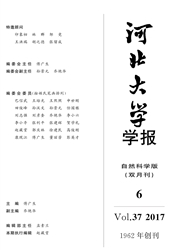

 中文摘要:
中文摘要:
传统产学研创新模式正在向"三螺旋"模式演化。作为煤炭行业摆脱目前困境的有效途径,产学研协同创新能够充分发挥其在产业转型和升级中的作用。本文以"三螺旋"模型为基础,构建了以煤炭高校和相关科研机构作为行业科研成果创造主体,以煤炭企业(集团)作为创新成果的应用主体,以政府作为协同创新的组织和协调主体的煤炭产学研协同创新网络平台。该平台同时融入中介机构和其他服务机构的有效参与,并通过与环境的互动,形成了多元、开放、动态的网络创新平台。平台围绕着煤炭行业的共性和关键技术以及管理创新问题,通过关系联结和互动行为机制,建立高度互惠的利益分享和风险共担机制,进而构建相互支撑的知识网络,并通过与环境之间的信息和知识的不断交流使得网络结构和知识容量螺旋上升。基于"三螺旋"理论模型的煤炭产学研协同创新平台及运行机制实现了信息、技术、资金和人才等创新资源在行业内有序流动,有效地促进了产学研协同创新目标的实现。
 英文摘要:
英文摘要:
Traditional innovation model is now evolving into the triple helix pattern. As an effective way out of the current predicament in the coal industry, collaborative innovation of industries, universities and research institutions in coal industry can be brought into full play in the industrial transformation and upgrading. Based on the triple helix theoretical model (THTM), the present paper has constructed a IUR collaborative innovation network platform by taking the universities and the relevant scientific research institutions in coal industry as the creators or innovators of the industrial scientific achievements, by taking the coal enterprises as the users of the innovative achievements, and by taking the government as the organizer and coordinator for the collaborative innovation. Meanwhile, the platform has incorporated the effective participation of intermediary organizations and other facilitating agencies. It has become a multiple, open and dynamic network innovation platform by interacting with the environment. With the commonality of coal industry and with the goal of key technology and management innovation, by relationship connection and interaction, the platform becomes a highly beneficial mechanism for benefit sharing as well as for risk sharing. On the basis of this, it further constructs knowledge network for mutual support and enables the spiral increase of network structure and knowledge capacity by interacting with the environment in terms of information and knowledge. The I-U-R collaborative innovation network platform in coal Industry and its operating mechanism based on triple helix theoretical model has realized the orderly flow within the industry in terms of innovation resources such as information, technology, funds and talents. It has effectively stimulated the realization of the goal of collaborative innovation of industries, universities and research institutions.
 同期刊论文项目
同期刊论文项目
 同项目期刊论文
同项目期刊论文
 期刊信息
期刊信息
